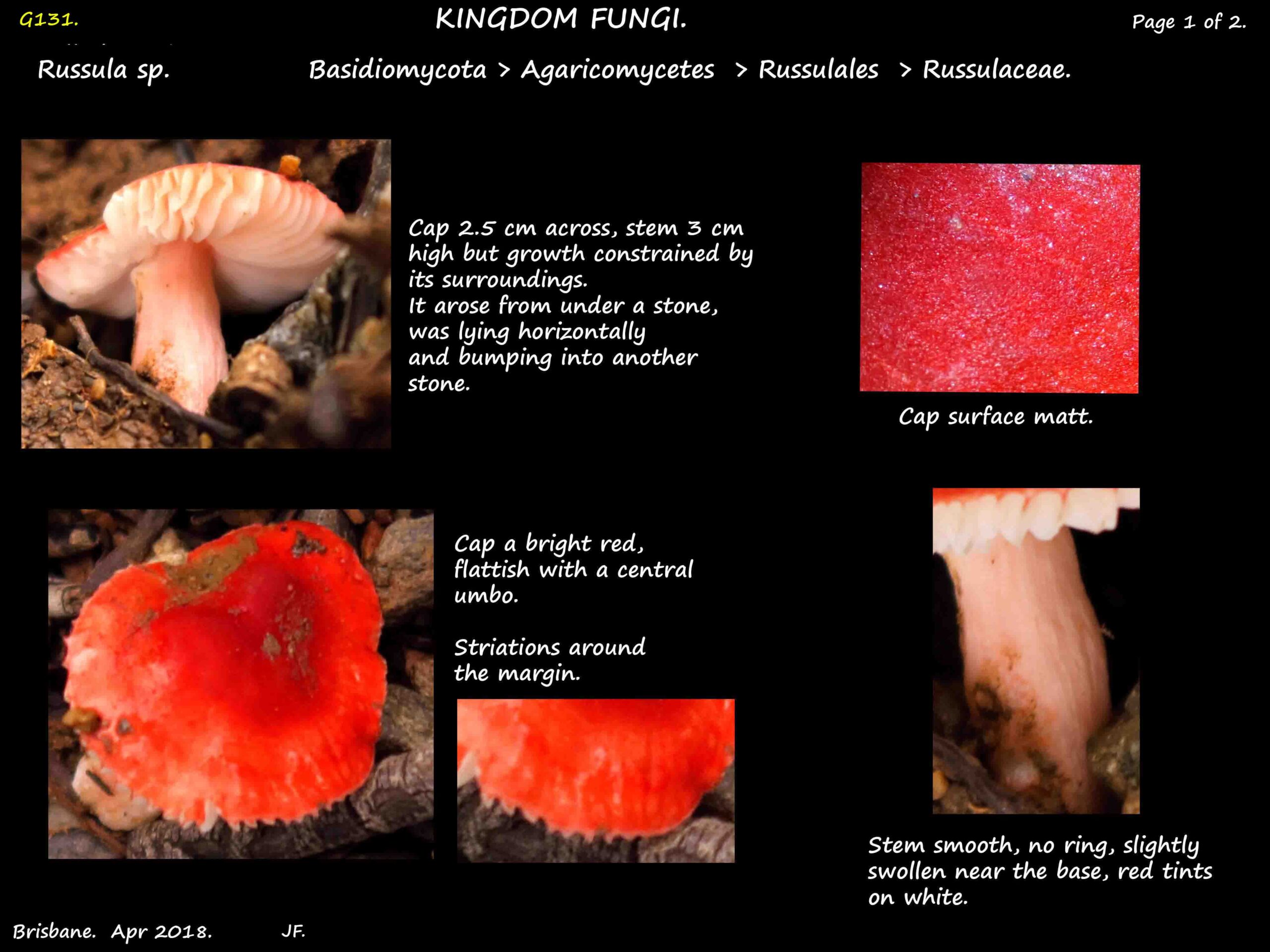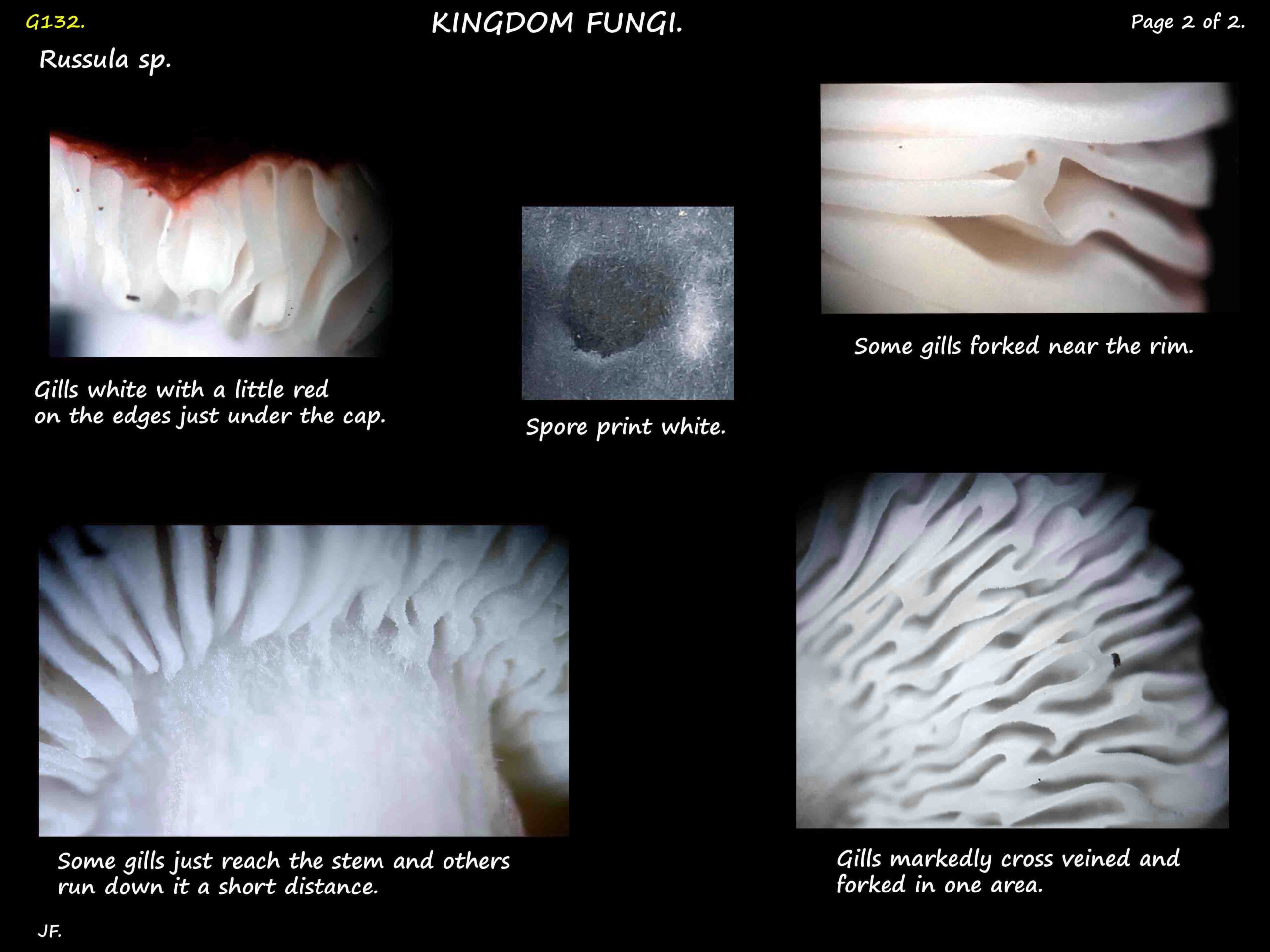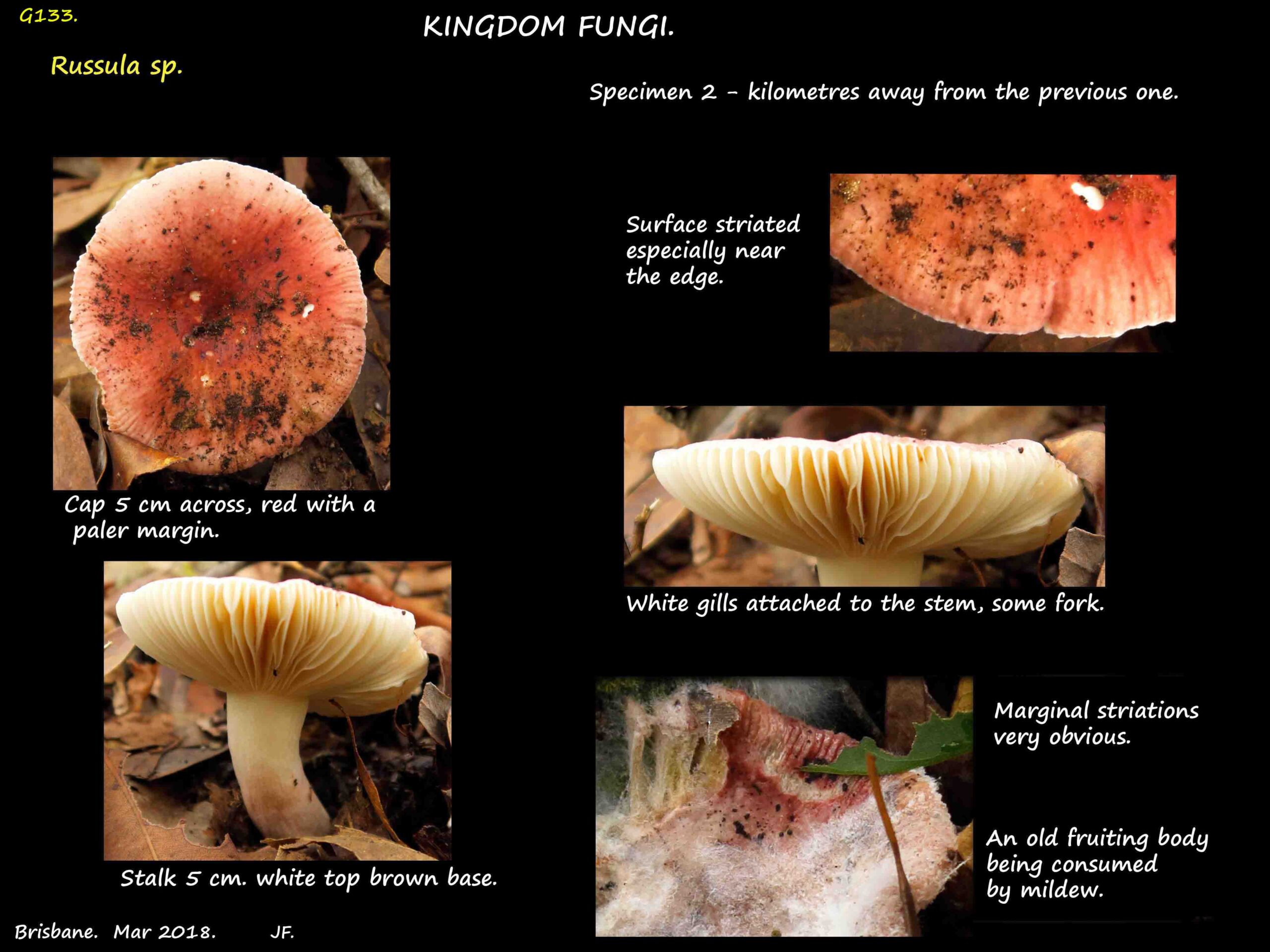Russula sp.
Basidiomycota > Agaricomycetes > Russulales > Russulaceae.
A number of species have a red cap, white gills and stem.
Russula persanguinea.
Forms a beneficial relationship with eucalypt roots and is found in Australia.
The cap is red, up to 7 cm across with a darker centre.
It is convex then flat with a shallow central depression.
There are striations around the rim of the cap.
A pure white stem up to 7 cm high, may thicken at the base.
The crowded, white gills are all the same length. Spore print is white.
Russula emetica.
The cap is a bright scarlet, 2.5 to 8.5 cm across and sometimes sticky.
Young caps are convex, older ones are flattened.
Sometimes there is a central depression or shallow umbo.
When mature the margins have radial striations up to 7 mm long.
Flesh is white and 4 – 9 mm thick.
The stem is white, smooth, up to 10.5 cm long and 2.5 cm thick, and may be thicker at the base.
The surface is smooth and there is no ring or volva.
Gills are white, crowded, occasionally forked near the margin and may have cross connections between them.
They are free of the stem or attached to a varying degree.
Spore print is white.
Russula rosea.
It is also known as Russula lepida.
It is rare in Australia.
The cap is convex then flat with a slight central depression.
It is up to 10 cm across with a matt surface.
Bright red but often with yellow spots or cream towards the centre.
The stem is up to 10 cm high and the base may be slightly swollen.
It is usually white with red tints near the top which may fade, but can be pure white.
The gills are pale cream sometimes with a red edge at the rim.
They are almost free of the stem and forked. Spore print pale-cream.
J.F.




